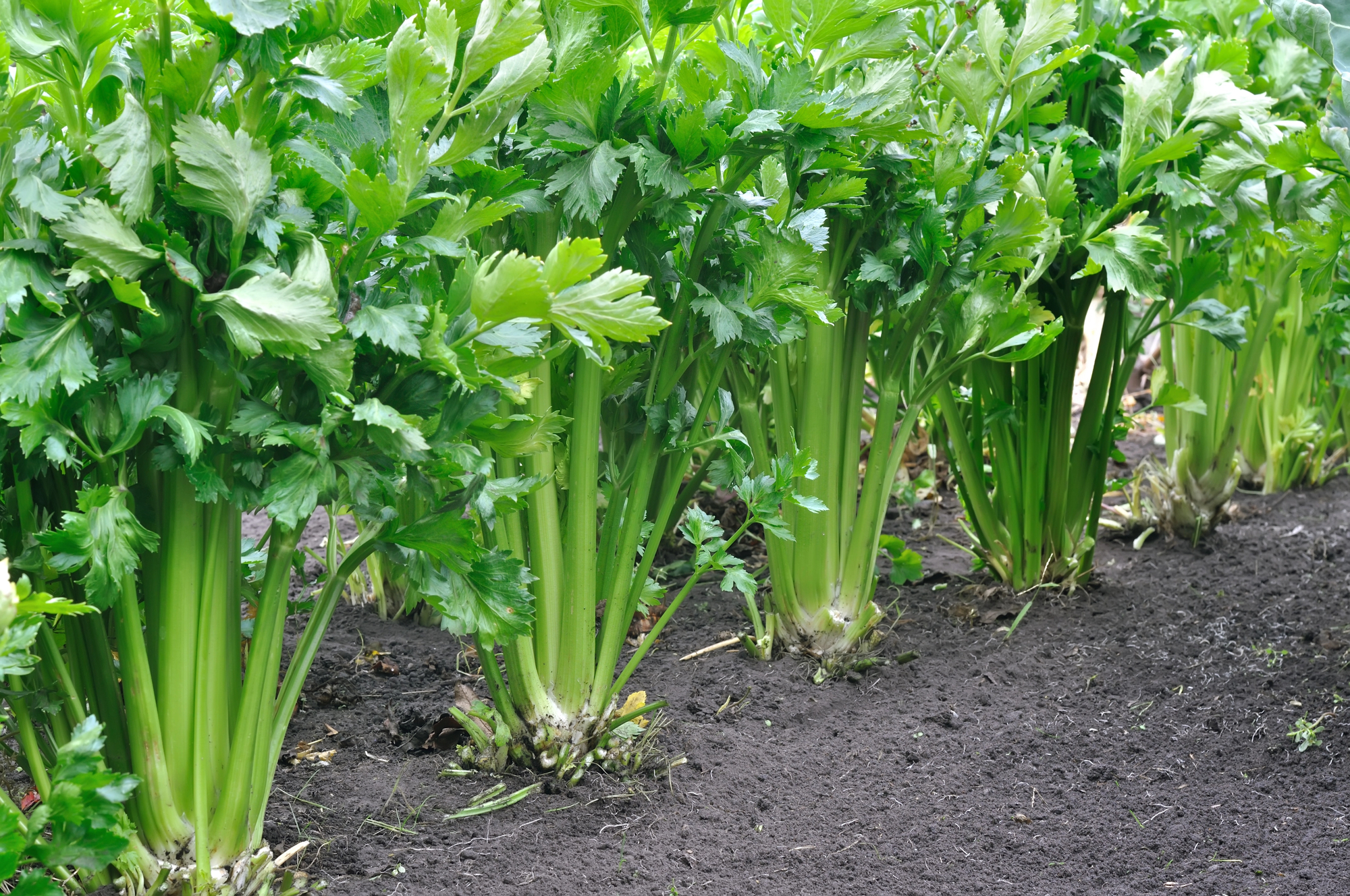Celery Donation Tracker
Quick Links: How & Where to Grow | Temperature | How to Care For | Harvest Signs | Harvesting | Blanching | Pests | Companions | Preservation | Recipes | Michigan Tips | Fun Facts
🌱 How & Where to Grow Celery:
- Start seeds 10-12 weeks before frost – celery has one of the longest seed-to-harvest times in the garden!
- Transplant seedlings when soil reaches 50°F and plants are 3-4 inches tall.
- Space plants 6-8 inches apart in rows 24-30 inches apart.
- Needs 16+ weeks of cool weather – patience is essential with celery.
- Sunlight: Full sun to partial shade (6+ hours preferred).
- Soil Type: Rich, moisture-retentive soil with pH 5.8-6.8.
- Soil Amendment: Heavy feeder – needs rich soil with lots of organic matter and consistent calcium.
Celery is called “The Garden Challenge” for good reason – it demands perfect conditions and constant attention!
🌡️ Temperature Guidance:
Germinate at 70-75°F. Transplant when soil 50°F. Needs 60-70°F season.
- Seed germination: Needs warm 70-75°F for 2-3 weeks.
- Transplanting: Wait for consistent 50°F soil temperature.
- Growing season: Thrives at 60-70°F days, 50-60°F nights.
- Critical warning: Below 50°F for extended time when young = bolting!
- Heat above 75°F causes bitter, stringy stalks.
Michigan’s variable spring weather makes celery timing tricky – one cold snap can ruin your crop!
💧 How to Care for:
- Consistent Moisture: CRITICAL – celery must never dry out!
- Watering: 1-2 inches per week minimum, more in hot weather.
- Mulch: 3-4 inches of organic mulch essential for moisture retention.
- Fertilizer: Feed every 2 weeks with balanced liquid fertilizer.
- Calcium: Side-dress with lime or gypsum to prevent blackheart.
- Wind protection: Brittle stalks break easily – provide windbreaks.
Think of celery as a marsh plant – it wants constantly moist, rich soil!
📏 Harvest Signs:
14-18 weeks from seed. Stalks 12-18 inches. Base 3+ inches wide.
- Stalks should be thick, crisp, and tightly formed.
- Outer stalks reach 12-18 inches tall when mature.
- Base of plant should be 3+ inches in diameter.
- Can harvest individual stalks or entire plant.
- Best quality before flowering – watch for center stalk elongating.
Don’t rush celery – immature stalks are stringy and flavorless!
🧺 Harvesting:
Cut individual stalks or entire plant. Water day before harvest.
- Water deeply the day before harvesting for crispest stalks.
- For individual stalks: Cut outer stalks at base with sharp knife.
- For whole plant: Cut at soil level or dig with roots.
- Morning harvest provides best quality and storage.
- Trim leaves for cooking – don’t waste them!
Harvest celery in cool weather for sweetest flavor and best storage.
🌿 Blanching:
Optional technique for milder, more tender stalks.
- Method 1: Hill soil around stalks 2-3 weeks before harvest.
- Method 2: Wrap plants with newspaper or cardboard collars.
- Method 3: Plant in trenches and gradually fill.
- Begin blanching when plants are 12 inches tall.
- Modern self-blanching varieties reduce need for this step.
Blanching produces pale, mild celery but reduces nutritional value.
🪲 Michigan Pests:
Blackheart (calcium deficiency), fusarium yellows, armyworms, aphids.
- Blackheart – brown/black inner leaves from calcium deficiency. Maintain consistent watering and add lime.
- Fusarium yellows – yellowing and stunting. Choose resistant varieties.
- Armyworms – caterpillars that chew leaves. Hand-pick or use Bt.
- Aphids – cluster on growing points. Blast off with water.
- Slugs – love moist conditions. Use beer traps or diatomaceous earth.
🫱🏽🫲🏼 Companions:
Good with beans, brassicas, leeks.
- Avoid corn, parsnips.
- Beans fix nitrogen for hungry celery.
- Brassicas (cabbage family) share similar growing needs.
- Leeks and onions help repel celery pests.
- Tomatoes may improve celery’s flavor.
- Never plant near corn – competes for nutrients and water.
🫙 Preservation:
Fresh (2 weeks). Freeze blanched. Dehydrate. Celery salt from leaves.
- Fresh storage: Wrap in aluminum foil in crisper – lasts 2-3 weeks.
- Freezing: Blanch chopped stalks 3 minutes, freeze in portions.
- Dehydrating: Slice thin, dry for soup additions.
- Celery salt: Dry leaves, grind with salt – don’t waste those nutritious tops!
- Celery root storage: If grown with roots, store in damp sand.
- Pickling: Makes excellent pickled vegetables.
🧑🏽🍳 Recipes:
Classic in soups, celery salt seasoning, braised celery, juice.
- Essential in mirepoix (celery, onions, carrots) for soup base.
- Braised celery hearts – a forgotten vegetable side dish.
- Cream of celery soup – better than canned!
- Celery juice – trendy health drink.
- Waldorf salad – classic celery, apple, and walnut combination.
- Use leaves in stocks, salads, and as herb garnish.
✋🏼 Michigan Tips:
- Start seeds indoors by late January – celery needs every growing day.
- Mulch heavily – Michigan’s variable rainfall requires moisture insurance.
- Windbreaks essential – protect brittle stalks from storms.
- Plant in naturally moist areas of garden if possible.
- Consider self-blanching varieties for easier growing.
- Michigan’s humidity can increase disease pressure – ensure good airflow.
🧠 Fun Facts:
- 95% water but packed with vitamins and minerals.
- Michigan has commercially grown celery for over 100 years.
- Kalamazoo was once known as “Celery City” in the early 1900s.
- Wild celery was mentioned in Homer’s Odyssey.
- Athletes in ancient Greece were crowned with celery leaves.
- One stalk contains about 10 calories but provides 5% of daily potassium needs.


0 Comments